Brilliant Volkswagen ID.Buzz cuts through the increasingly generic appearance of modern EVs
The Volkswagen ID.Buzz embodies automotive practicality and makes the most of Volkswagen’s EV platform, creating a family of vans, campers and light commercial trucks to match its historic Type 2
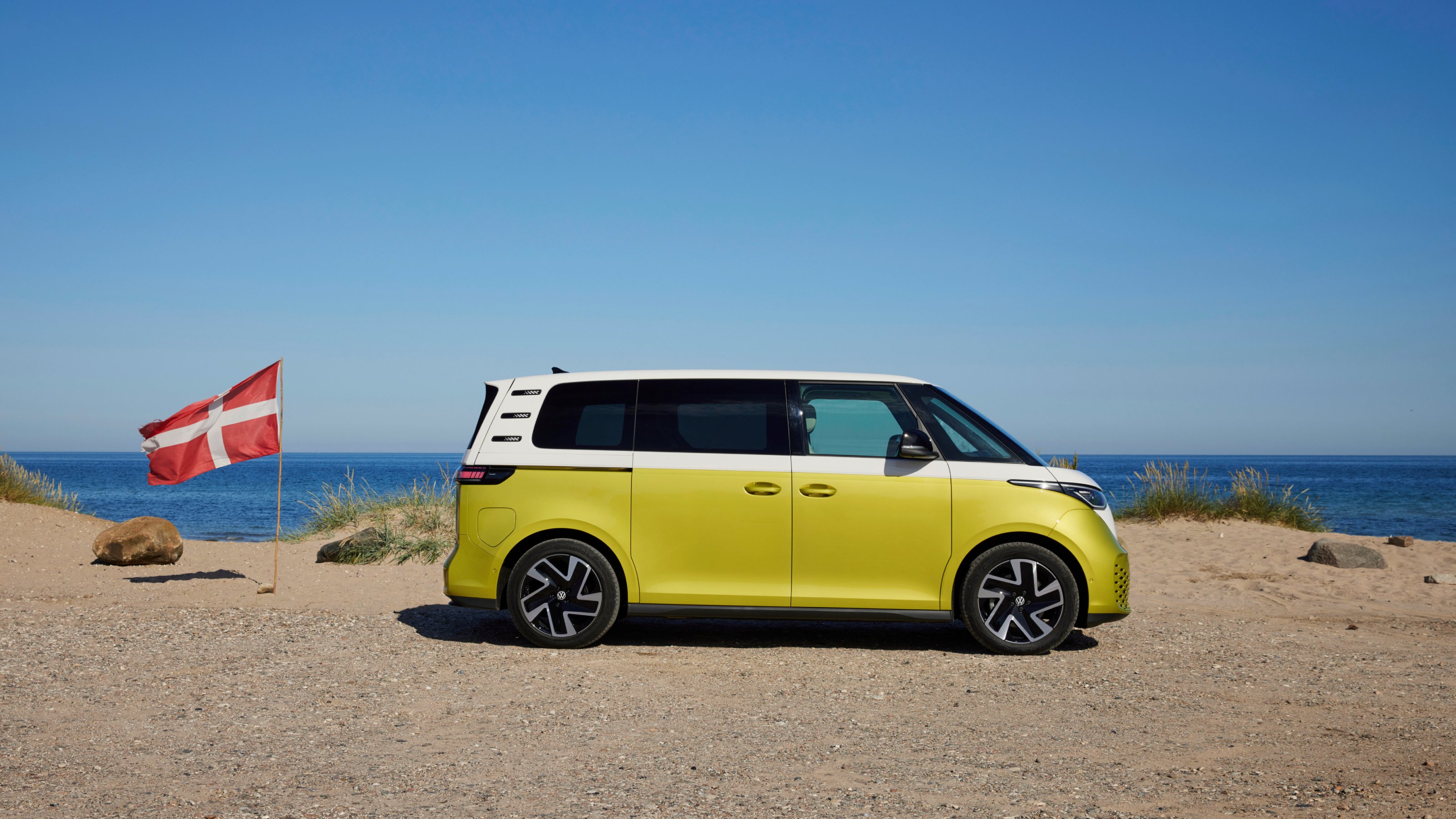
When the Volkswagen ID.Buzz finally arrived, it was clear that VW had spent plenty of time finessing the details. While the brand’s other ID models have been criticised for wayward software and less than inspiring styling, the ID.Buzz had a lot to live up to.
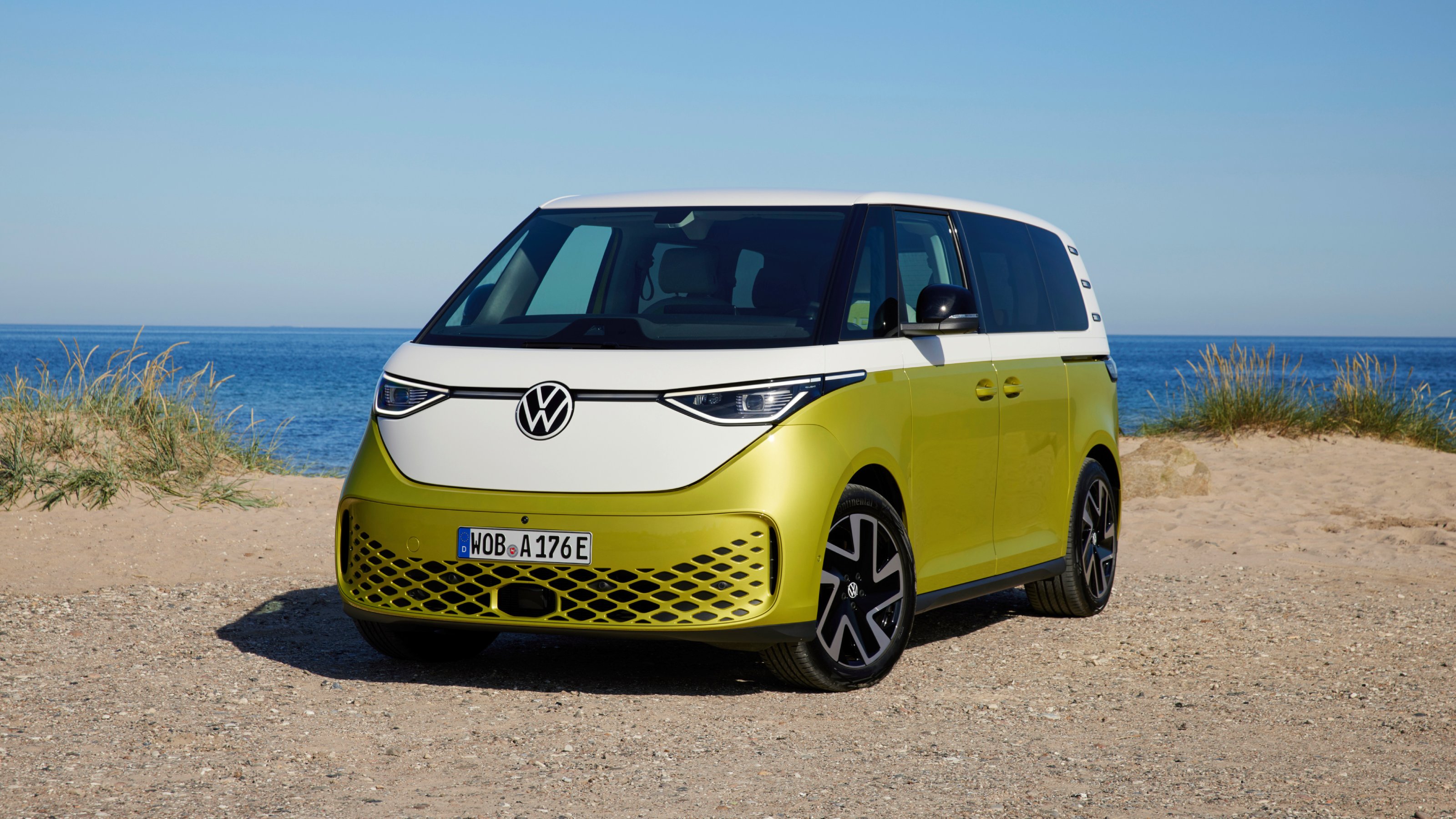
The spirit of Volkswagens past hangs heavy over the ID.Buzz. It’s not just in the retro two-tone paintwork, but in the scope of the whole endeavour; a van-like vehicle that can be adapted into an almost infinite variety of uses, just like the original Type 2.
Ironically, it’s taken until now for an EV platform to provide this potential flexibility at consumer level, rather than simply being a simple way for auto giants to spread the cost by sharing components across fleets and brands.
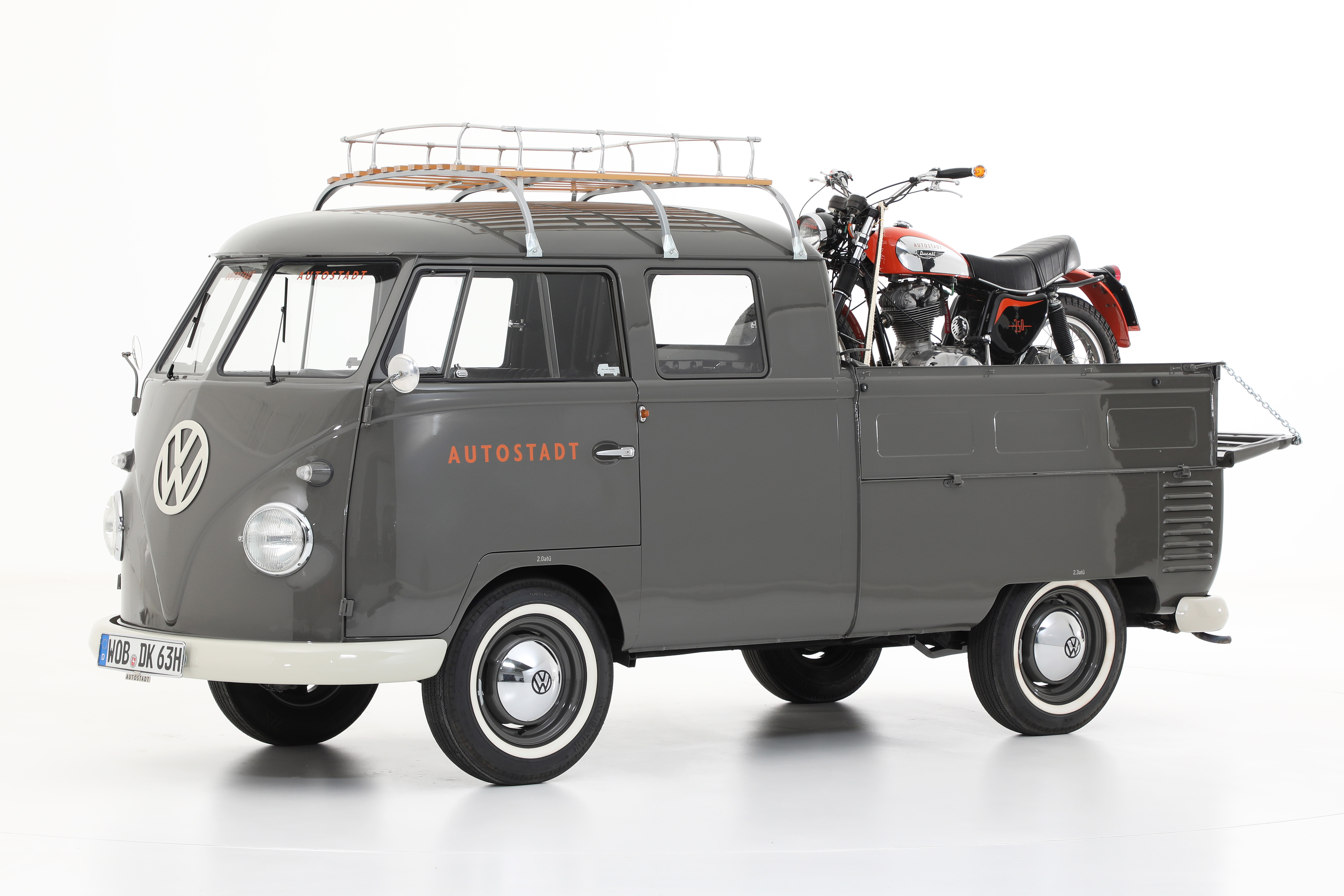
Volkswagen Type 261 (1965) and Ducati Scrambler 350 (1973)
The ID.Buzz isn’t alone. Mercedes has electrified its Viano model to create the EQV, while Vauxhall has the Vivaro Life Electric. However, both of these models share platforms with ICE equivalents, albeit a purely commercial one in the Vivaro’s case. VW’s advantage is a clean-sheet design, as well as a fertile tranche of good feelings left over from the collective cultural memory of VW’s Type 2 bus and its descendants.
Volkswagen ID.Buzz reviewed
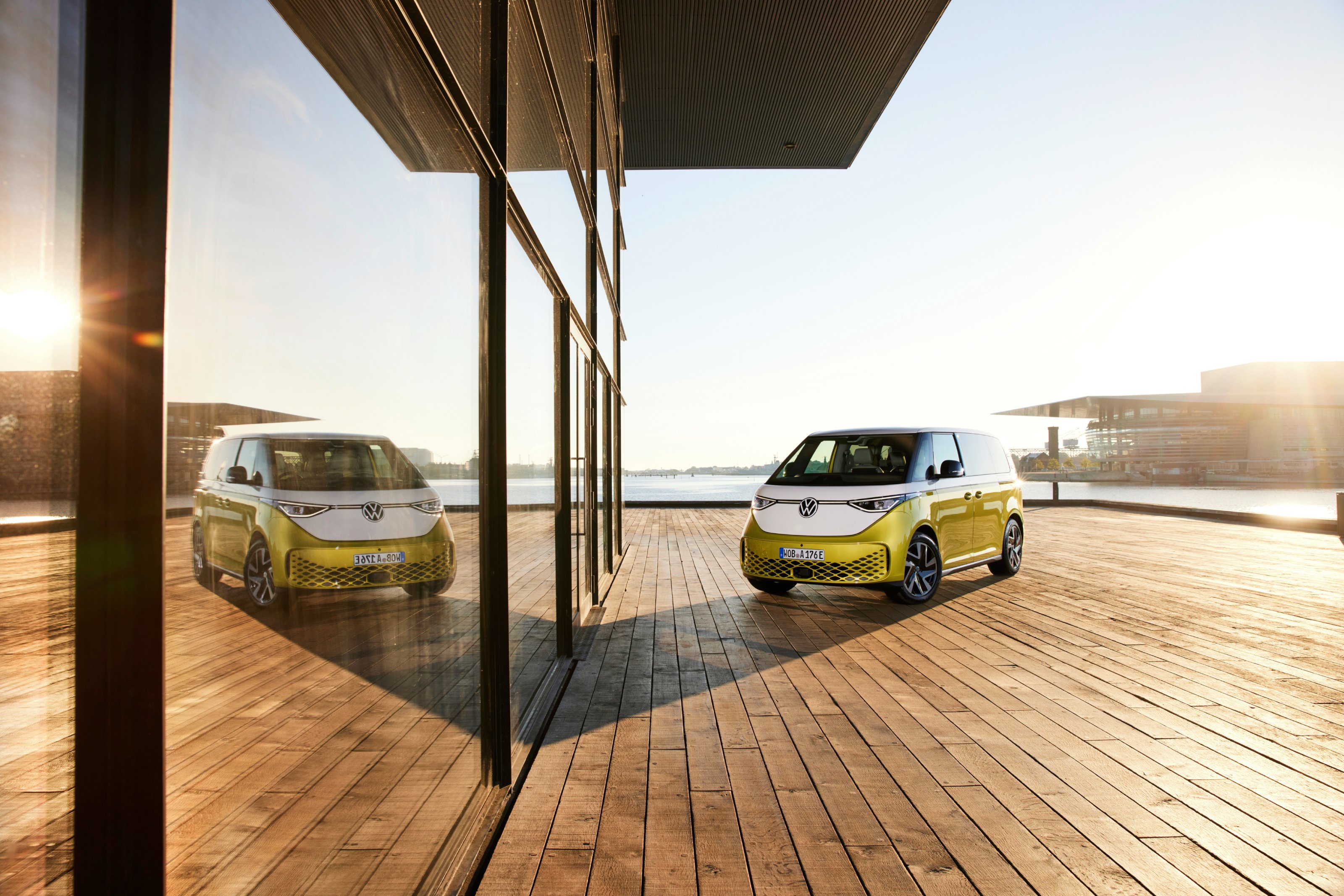
So does the Buzz rekindle this passion? Although long-wheel base passenger variants haven’t yet arrived, there’s already an ID.Buzz Cargo for those who want to forgo seats for goods, as well as two basic trim levels for the passenger model, the Life and the Style (the latter gives you that all-important layered paint job).
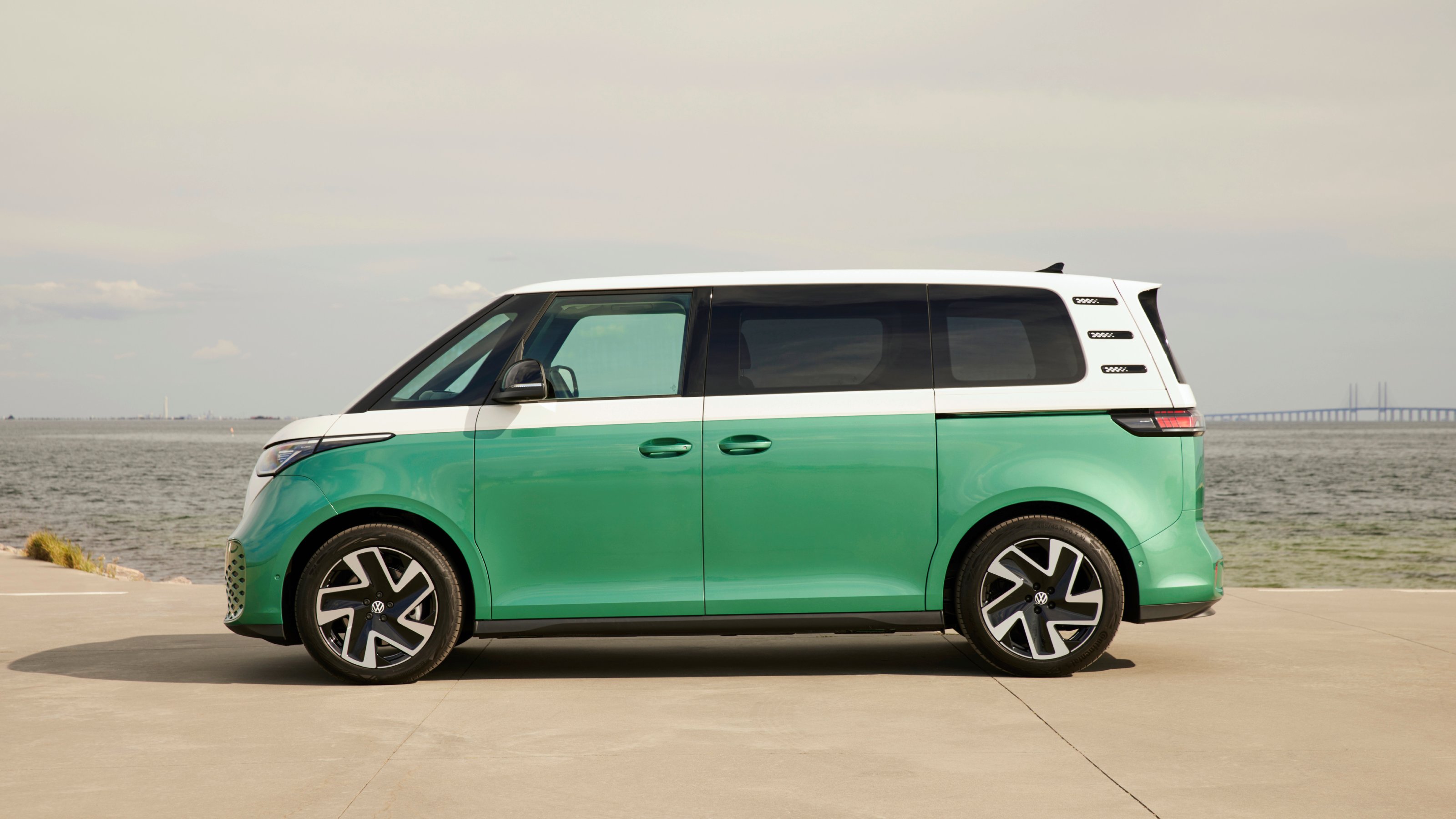
There’ll soon be a seven-seater variant, as well as a long-awaited camper version, a modern version of the cult 1950s and 1960s model and an electric rival to VW’s own California series. It’s not hard to imagine a pick-up variant, or an ice cream van or any number of other applications where profile is just as important as performance.
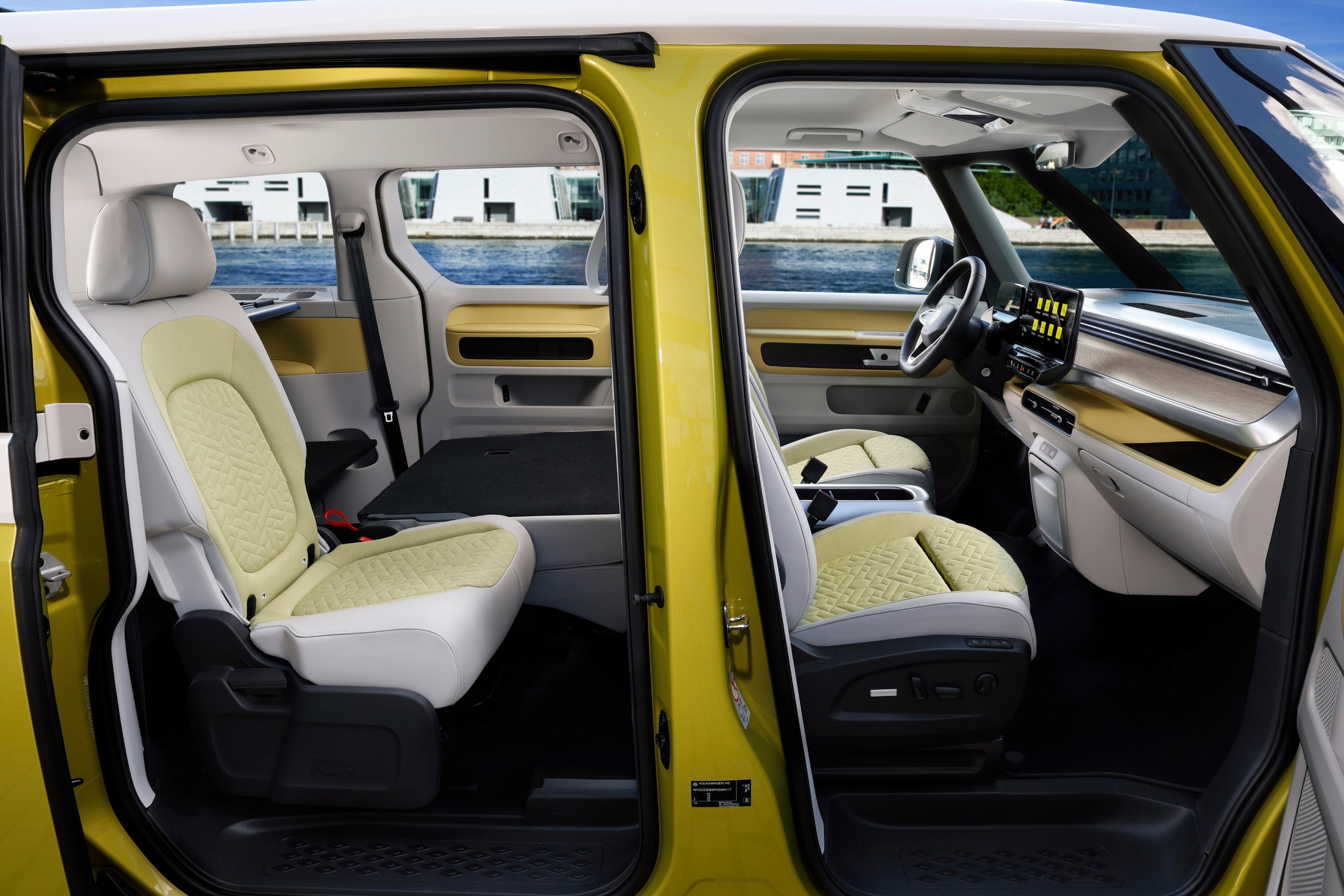
Not that the ID.Buzz is a slouch. With an official range of 258 miles (so just over 200 in real world use), it’s not quite as long-legged as more conventionally shaped rivals, but it easily sees off the other EV vans. Tuned for range and relatability, not out-and-out performance, the seating position is upright and far-sighted. Although you don’t quite sit above the front axle as in the vans of old, this is still very much a ‘cab forward’ design, and a good example of how an EV platform can easily adapt to a different body shape.
Wallpaper* Newsletter
Receive our daily digest of inspiration, escapism and design stories from around the world direct to your inbox.
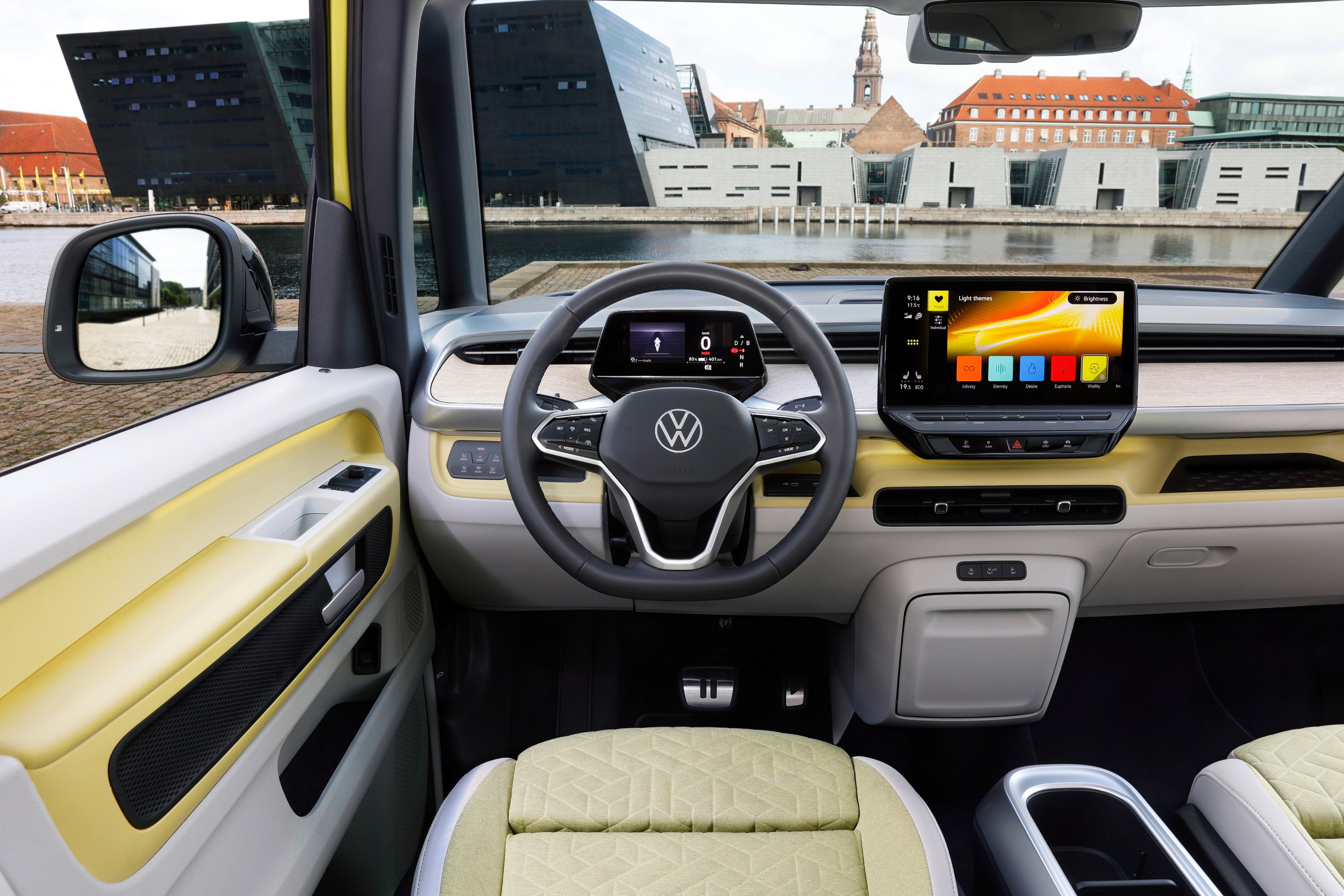
The cabin is well equipped, with oddment drawers, shelves and pockets providing ample storage space. The flat floor also opens up the internal space, while the rear bench folds perfectly flat with the dual level cargo deck, creating a generous double-bed sized space.
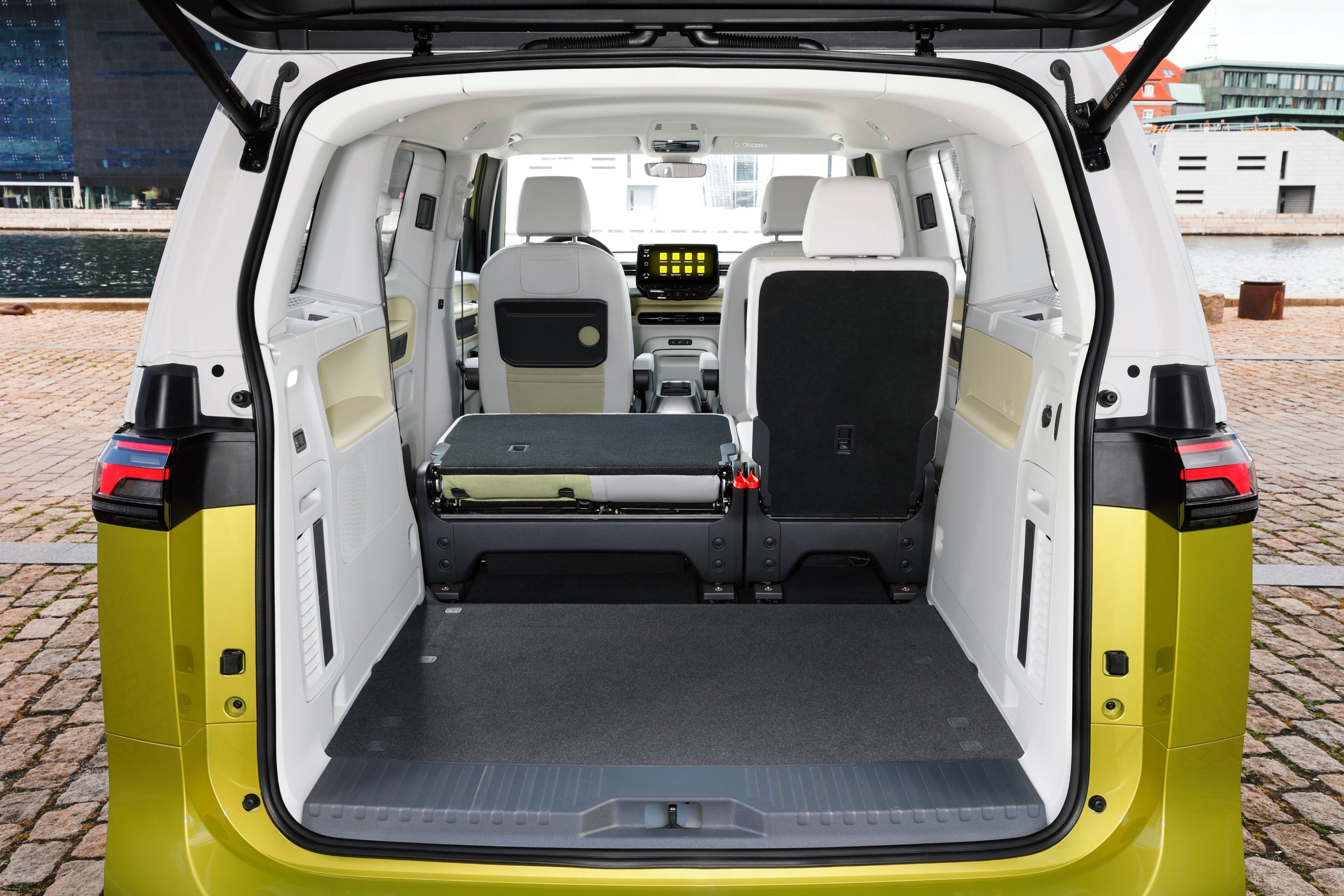
Aftermarket accessories are springing up, including items like Quququ’s BusBox-4, a compact folding mini-camper with stove, water supply and folding bed. Other innovations include German specialist ABT’s bespoke solar roof panels, which are design to top up the battery and provide power to onboard equipment. There’s also talk of allowing the Buzz to act as a standalone home power supply (something Hyundai’s Ioniq 5 can already do, amongst others).
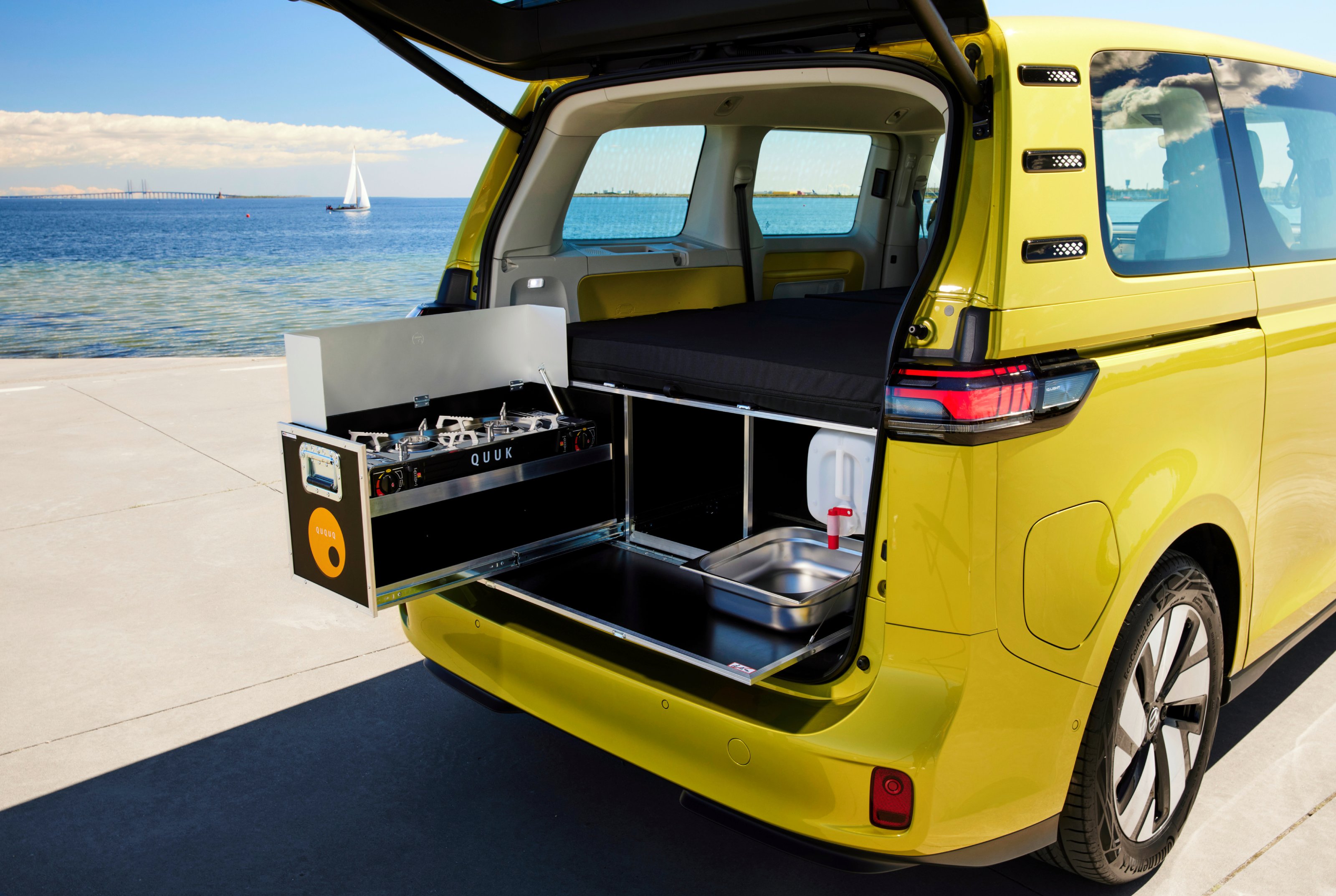
Volkswagen ID.Buzz with the Quququ BusBox-4
What the ID.Buzz gets right is the blend of form and function. It’s that rarest of cars that attracts attention for its looks yet is also 100 per cent, undeniably practical.
The low-slung battery pack dispels any lingering memories of top-heavy vans and campers, providing solidity on the road, even in heavy winds, and the Buzz can also pick up speed with aplomb, another entirely un-van-like characteristic.
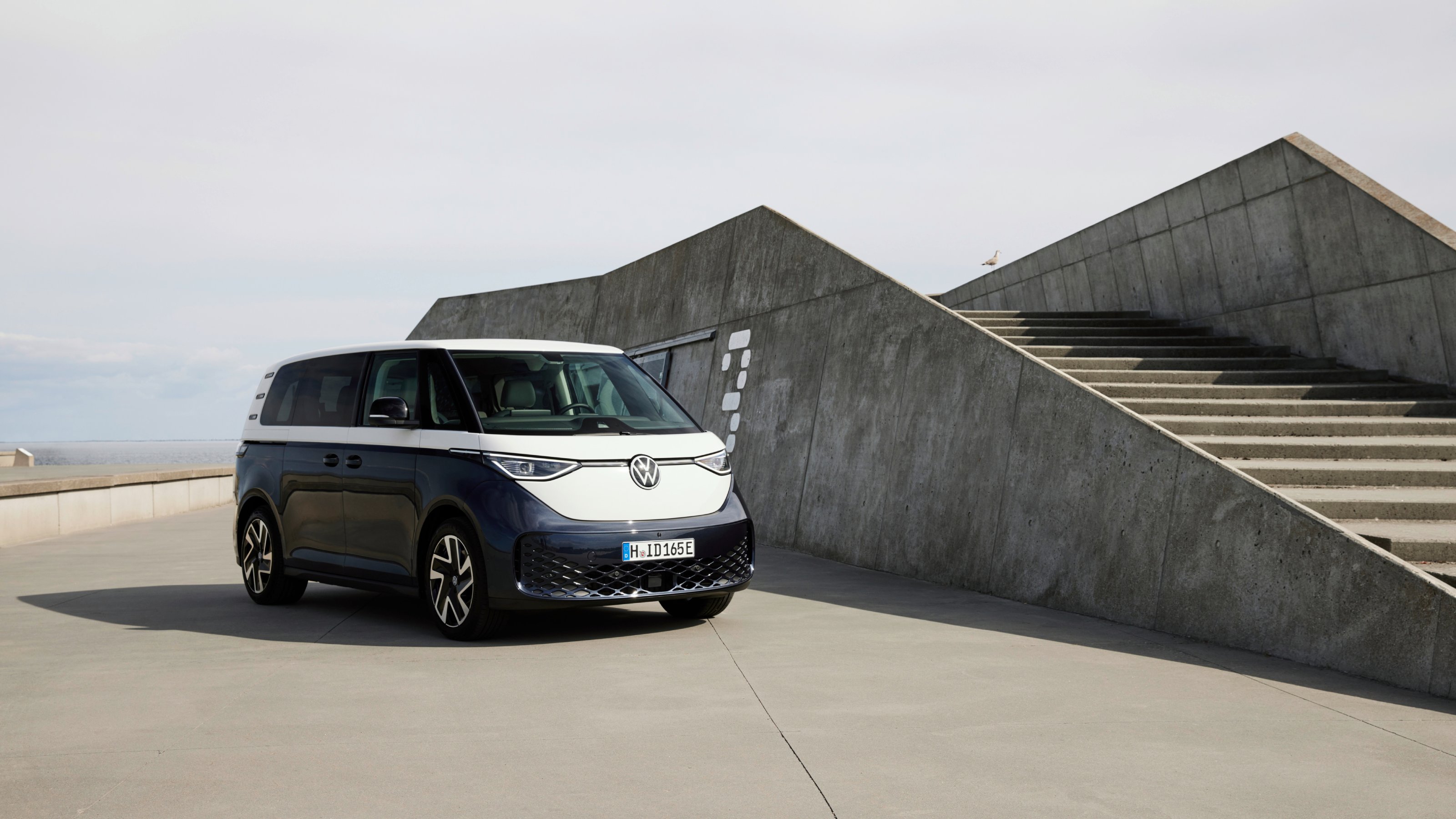
Other car makers must be looking jealously at how well VW has leveraged its heritage without compromising the forward-thinking modernity of a pure EV. As a result, VW hasn’t just remade an icon, it’s also built one of the first electric cars with guaranteed future classic status. It took a while to get here, but the ID.Buzz represents mission accomplished.
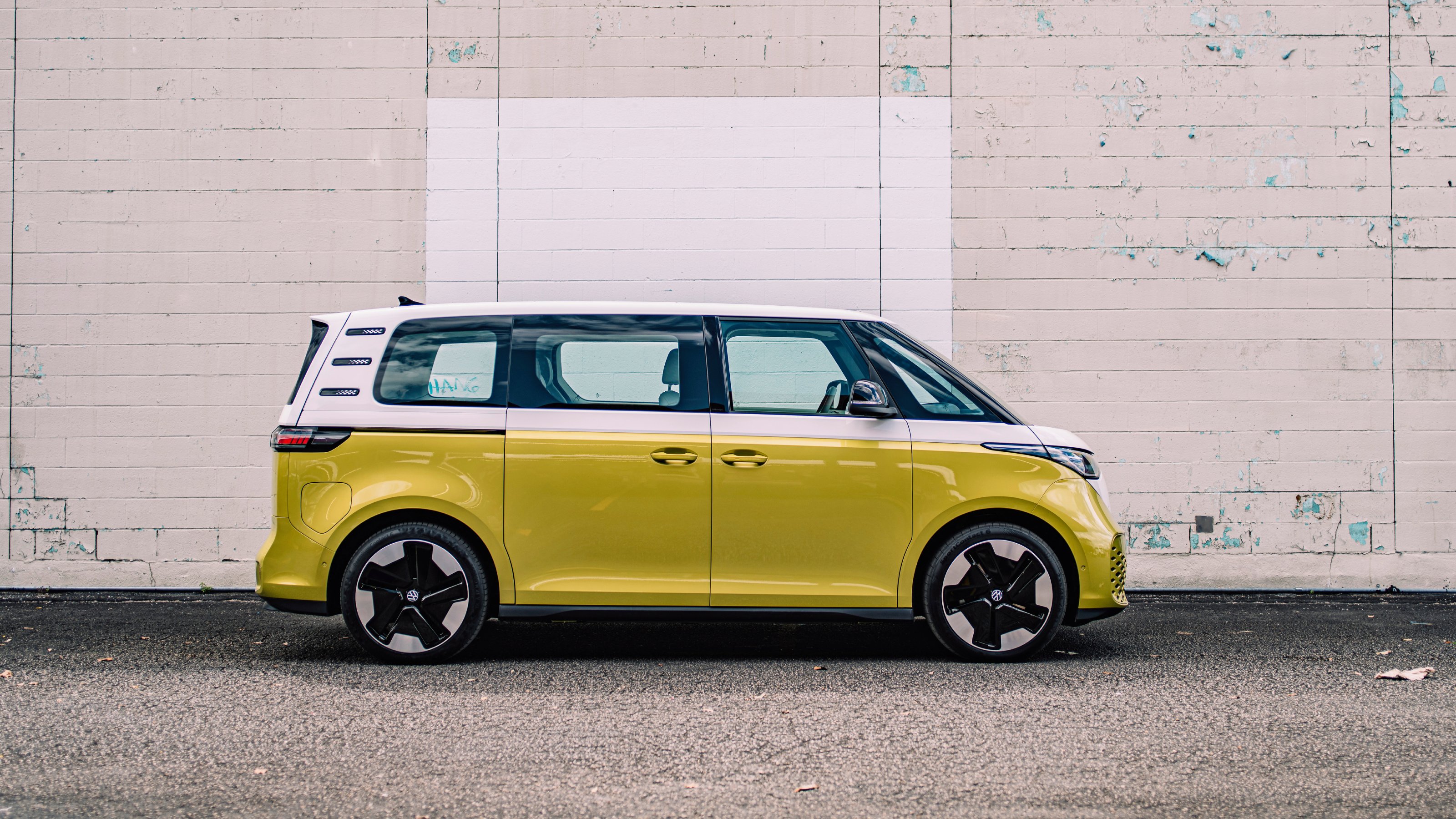
Volkswagen ID.Buzz, from £58,915 (ID.Buzz Life), £63,715 (ID.Buzz Style), Volkswagen.co.uk
Jonathan Bell has written for Wallpaper* magazine since 1999, covering everything from architecture and transport design to books, tech and graphic design. He is now the magazine’s Transport and Technology Editor. Jonathan has written and edited 15 books, including Concept Car Design, 21st Century House, and The New Modern House. He is also the host of Wallpaper’s first podcast.
-
 This new Vondom outdoor furniture is a breath of fresh air
This new Vondom outdoor furniture is a breath of fresh airDesigned by architect Jean-Marie Massaud, the ‘Pasadena’ collection takes elegance and comfort outdoors
By Simon Mills
-
 Eight designers to know from Rossana Orlandi Gallery’s Milan Design Week 2025 exhibition
Eight designers to know from Rossana Orlandi Gallery’s Milan Design Week 2025 exhibitionWallpaper’s highlights from the mega-exhibition at Rossana Orlandi Gallery include some of the most compelling names in design today
By Anna Solomon
-
 Nikos Koulis brings a cool wearability to high jewellery
Nikos Koulis brings a cool wearability to high jewelleryNikos Koulis experiments with unusual diamond cuts and modern materials in a new collection, ‘Wish’
By Hannah Silver
-
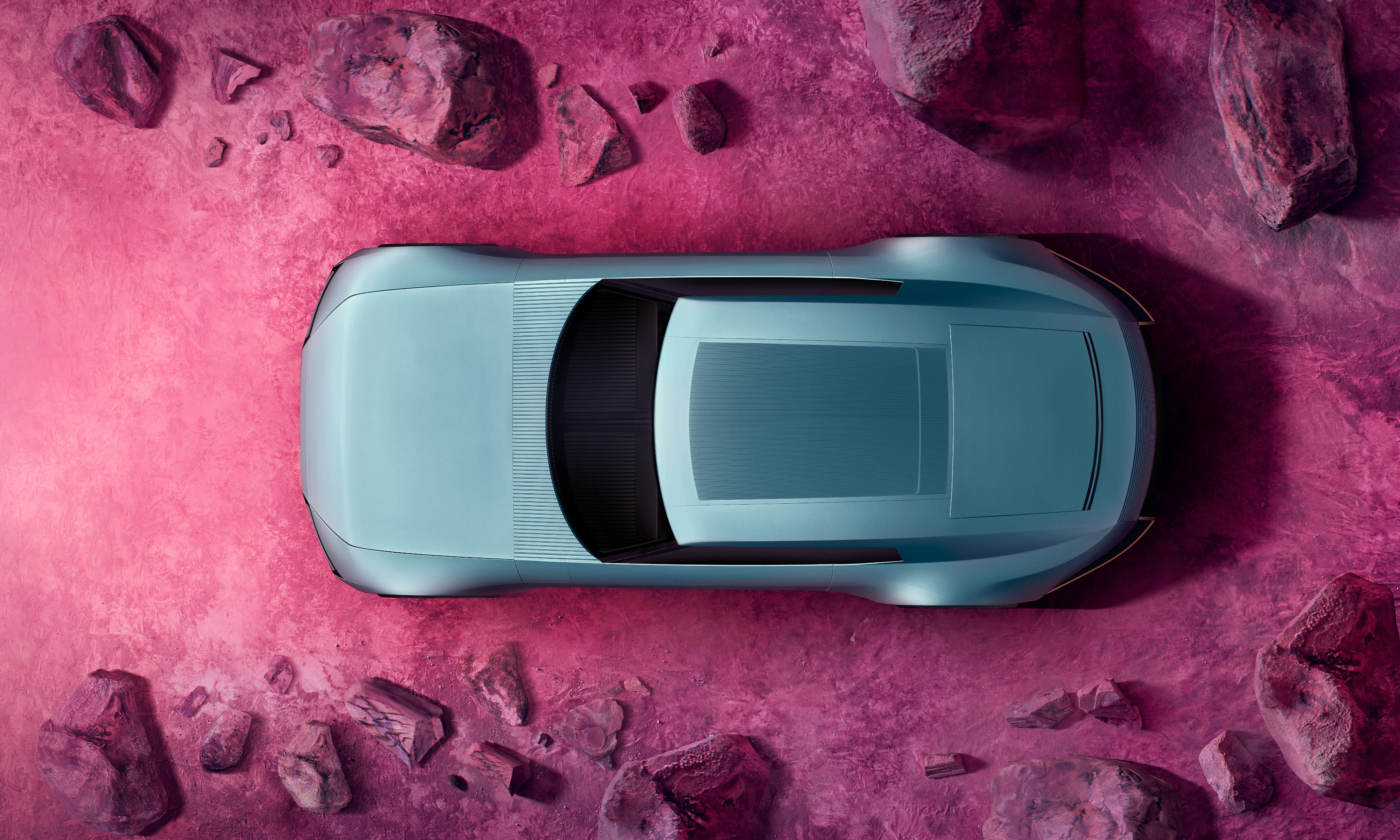 The top 10 concept cars of 2024, as selected by Wallpaper’s Transport Editor
The top 10 concept cars of 2024, as selected by Wallpaper’s Transport EditorWe round up our favourite forays into futuristic design with this collection of concepts and design studies showcasing the transport of tomorrow
By Jonathan Bell
-
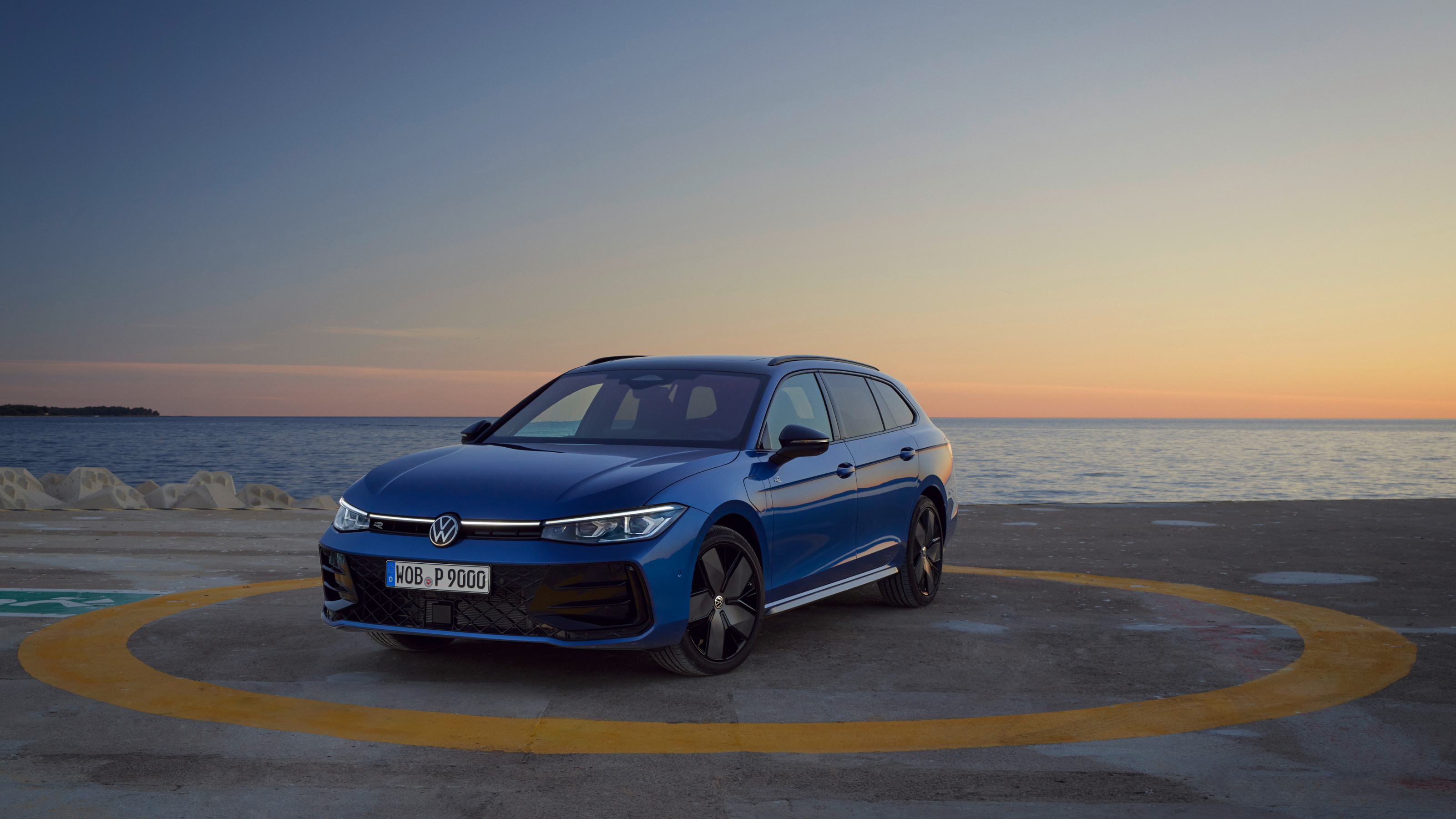 The Volkswagen Passat is a sober, straight edged estate car that feels increasingly out of time
The Volkswagen Passat is a sober, straight edged estate car that feels increasingly out of timeWhy would anyone pass on a Passat? Volkswagen’s big load lugger proves that the old ideas are still the best
By Jonathan Bell
-
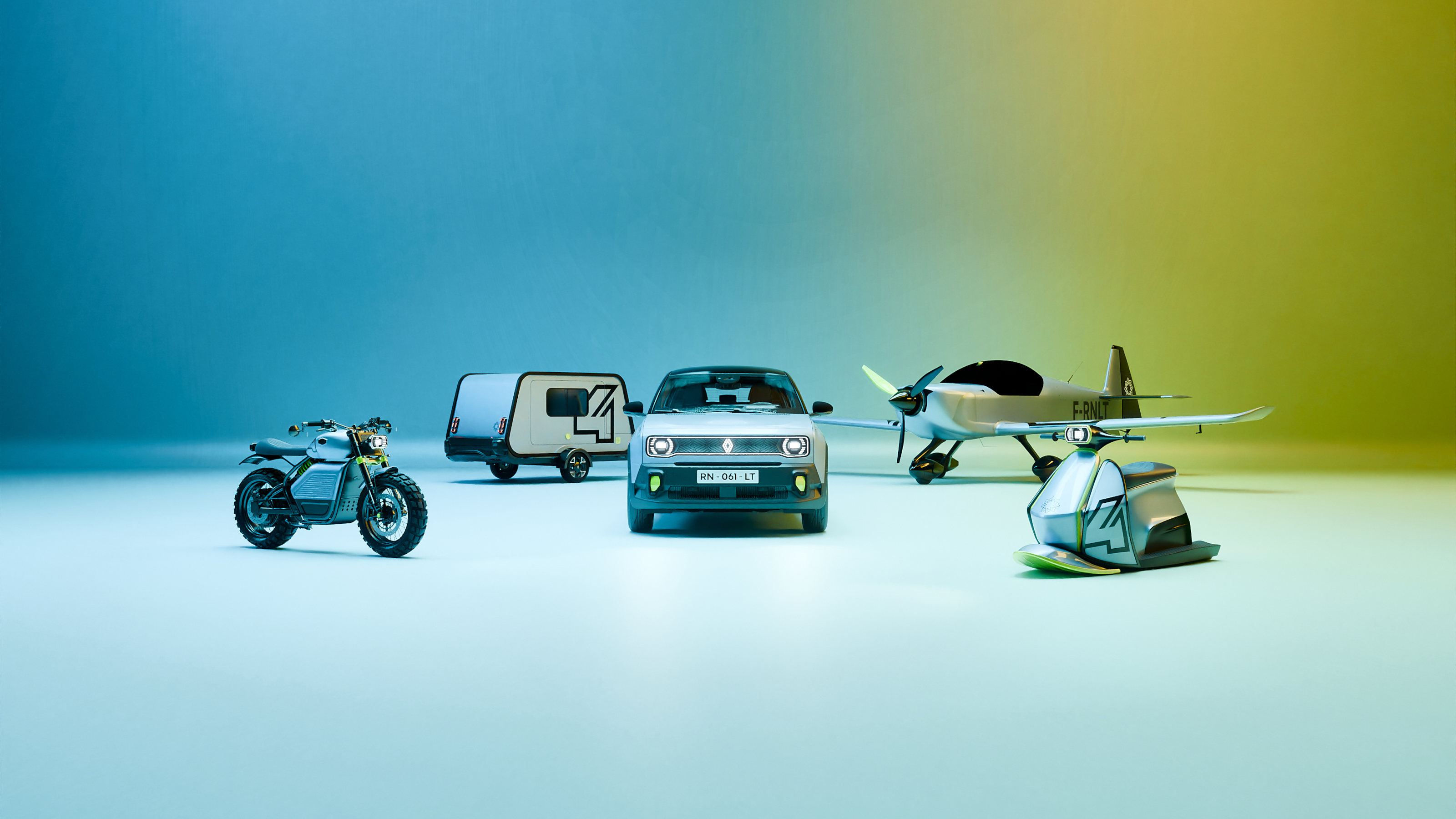 Renault celebrates new R4 EV and electric mobility with TheArsenale and four French start-ups
Renault celebrates new R4 EV and electric mobility with TheArsenale and four French start-upsRenault's '4 Movements' accompanied the R4 E-Tech at the 2024 Paris Motor Show; the clutch of sleek machines will bring innovative electrification to air, sea and water
By Jonathan Bell
-
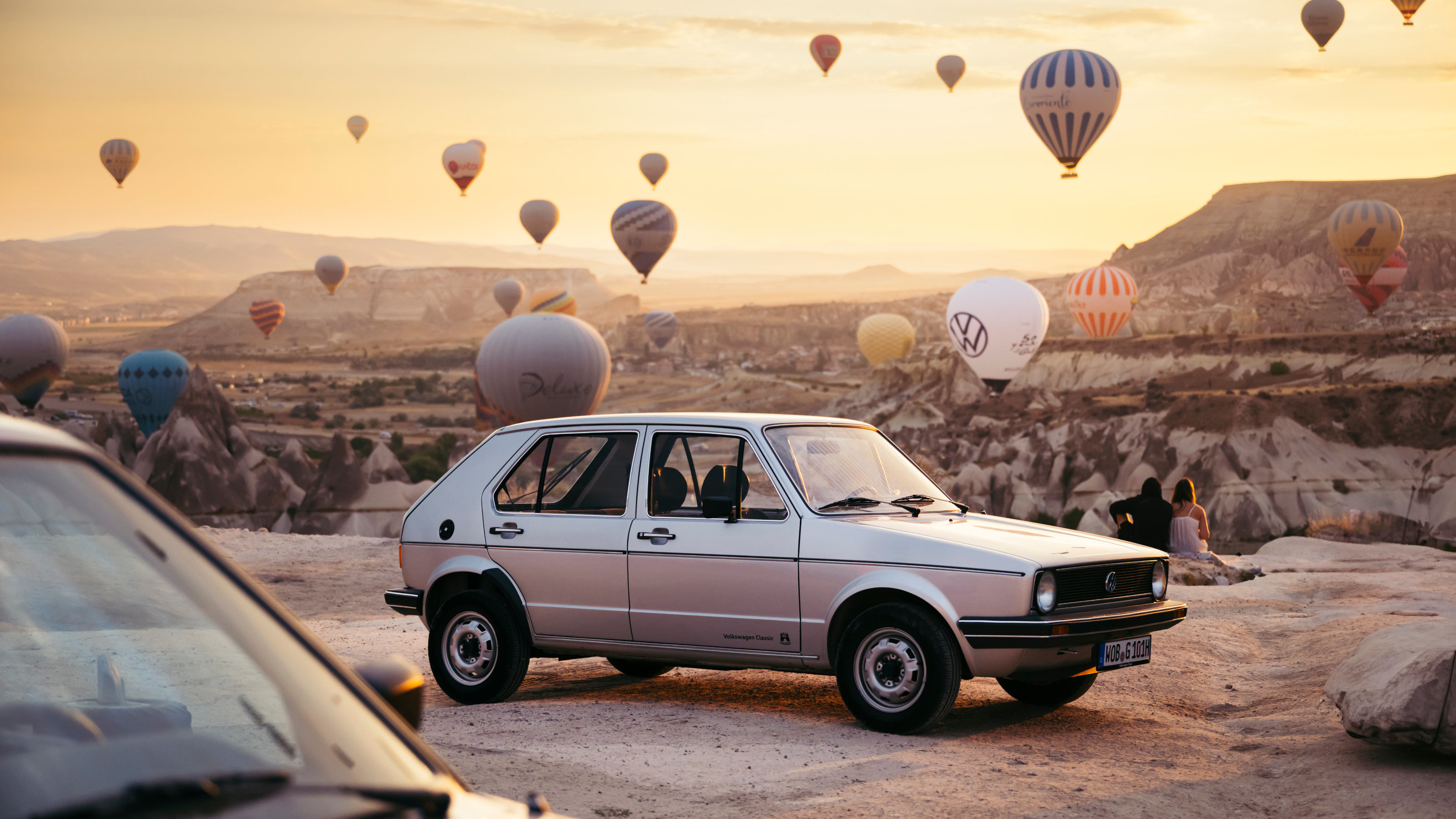 Volkswagen celebrates 50 years of the Golf, its most famous modern model, with a flight of fancy
Volkswagen celebrates 50 years of the Golf, its most famous modern model, with a flight of fancyWallpaper* travelled to eastern Turkey in search of the perfect backdrop to mark 50 years and eight generations of the evergreen VW Golf
By Adam Hay-Nicholls
-
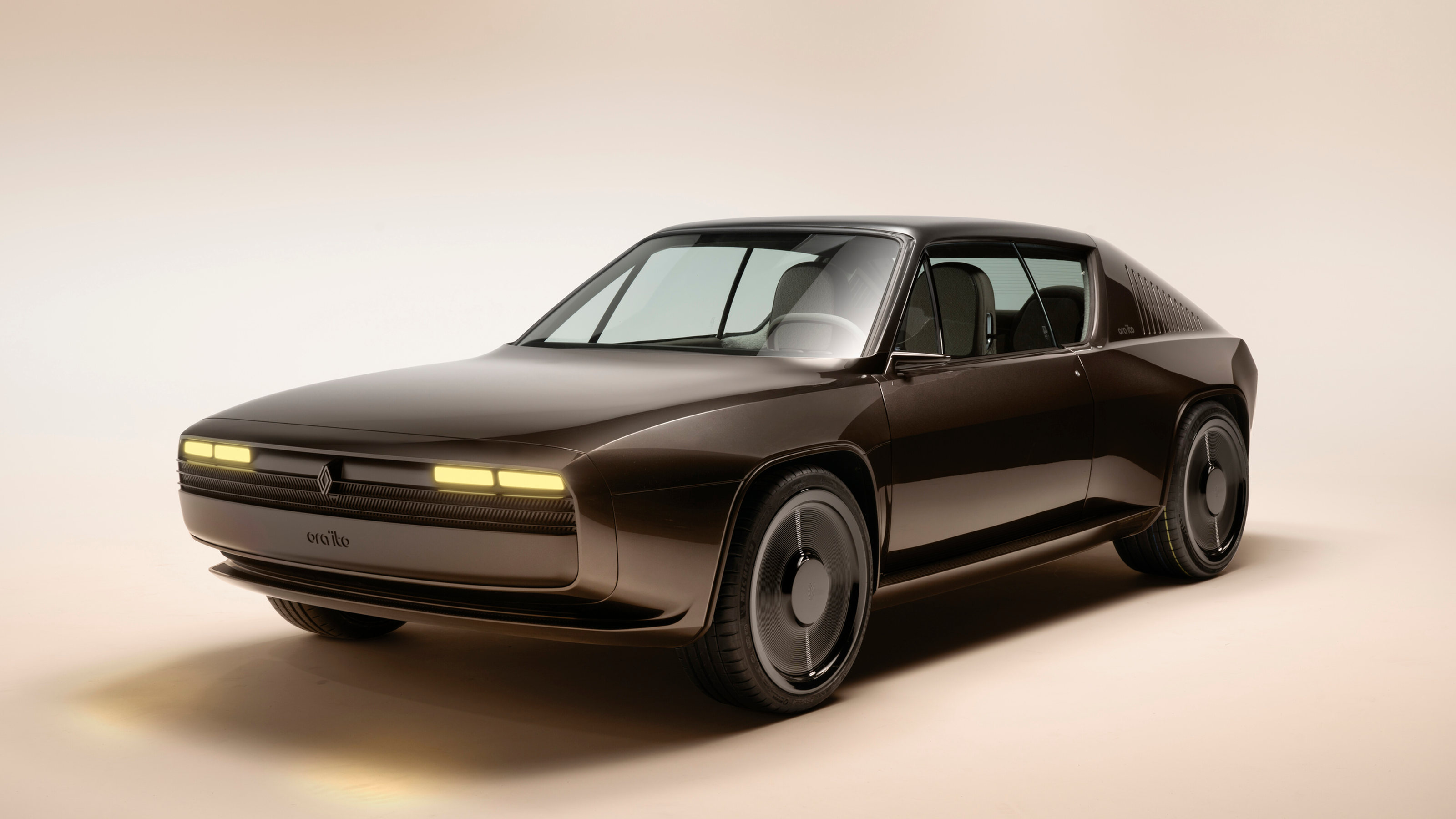 Ora-ïto transforms the Renault 17 into a futuristic yet retro-tinged vision
Ora-ïto transforms the Renault 17 into a futuristic yet retro-tinged visionThe R17 electric restomod x Ora-ïto is the fourth in Renault's series of designer-led reimaginings of iconic models from its past. We think it's the best of the lot
By Jonathan Bell
-
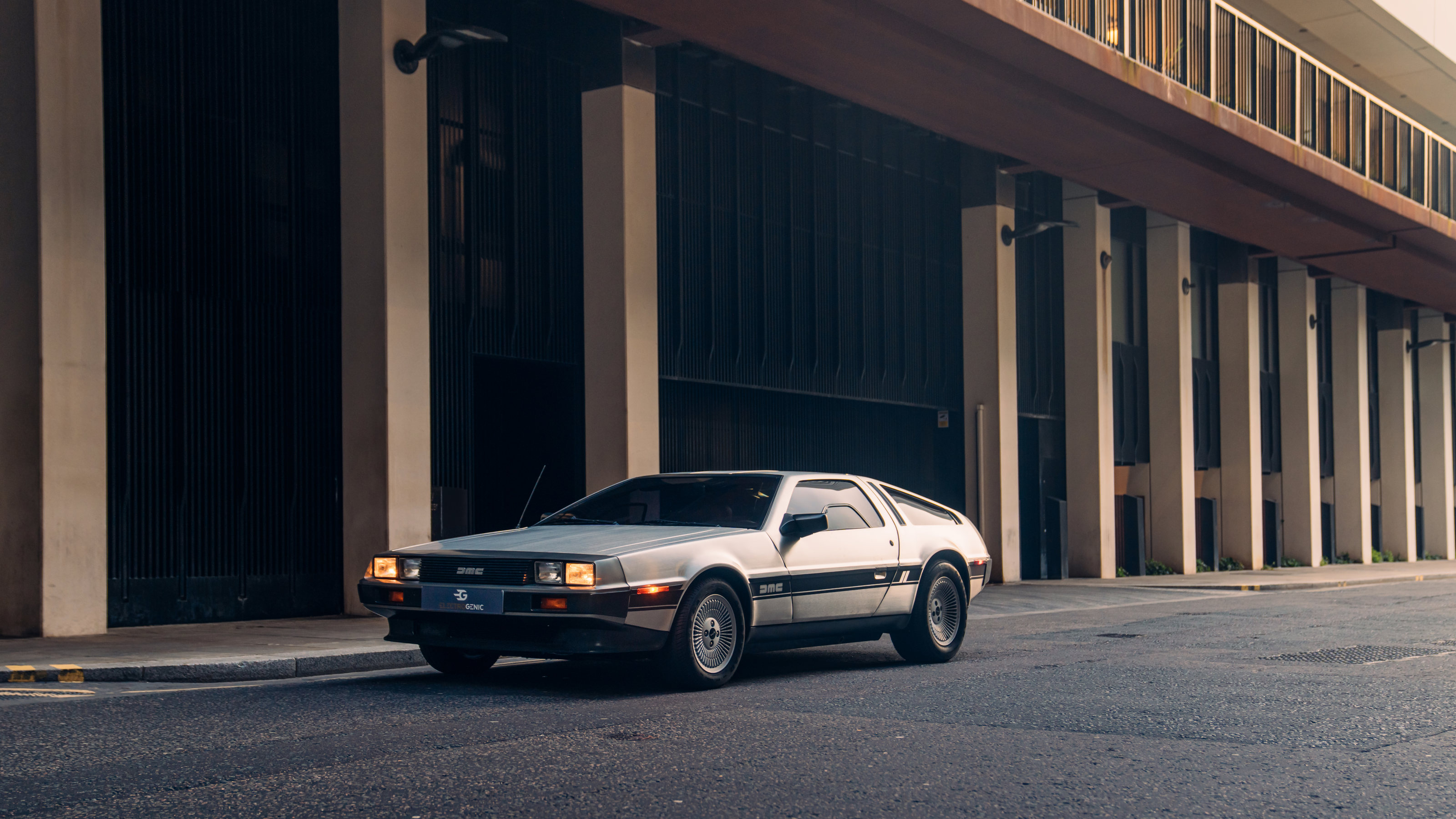 We sample the world’s first all-electric DeLorean, a stainless steel marvel for the modern age
We sample the world’s first all-electric DeLorean, a stainless steel marvel for the modern ageElectrogenic brings its brilliance with batteries and motors to bear on the iconic DeLorean DMC-12, giving this classic design the futuristic feel it deserves
By Jonathan Bell
-
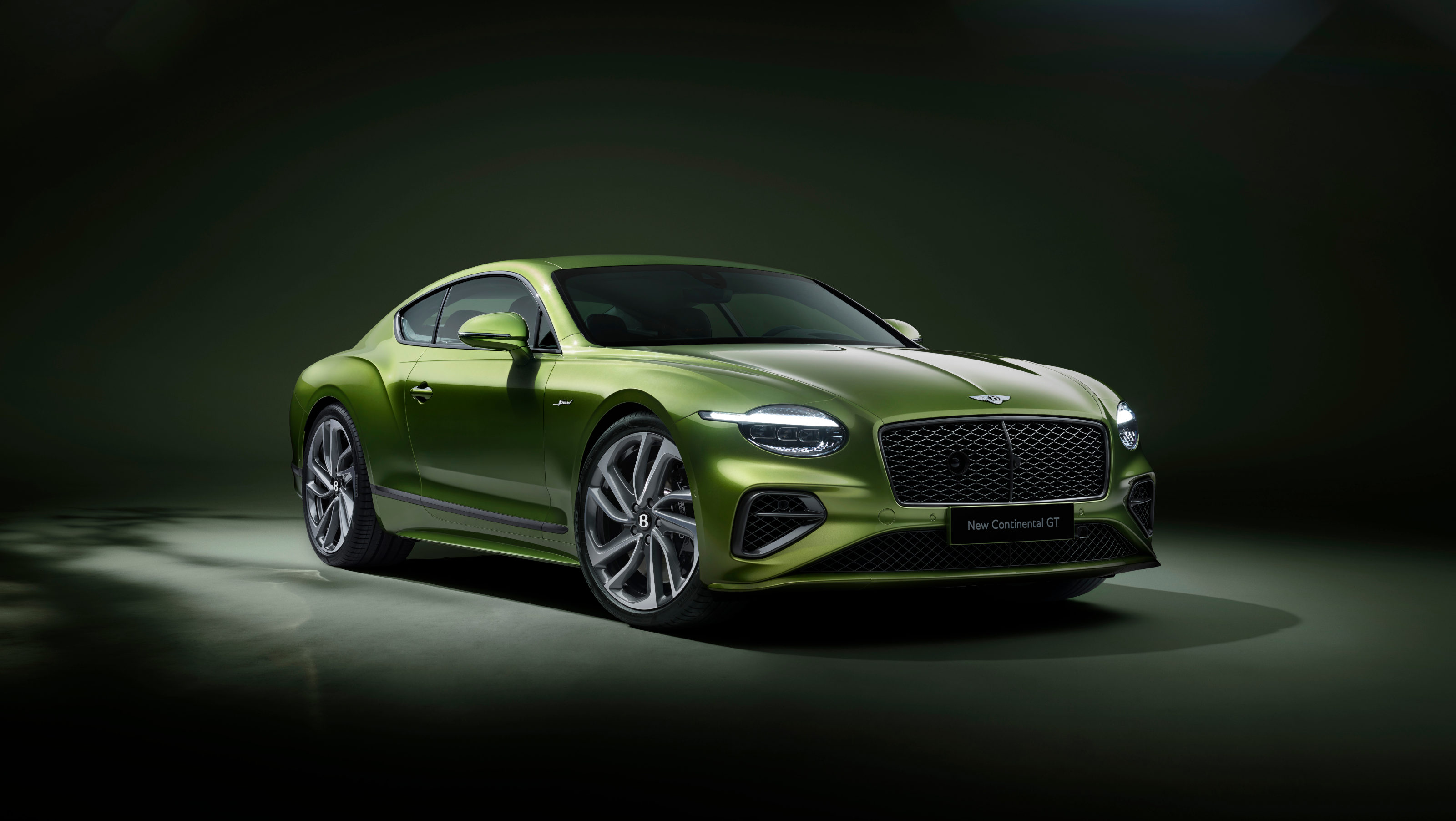 Bentley rolls out the latest version of its majestic grand tourer, the Continental GT Speed
Bentley rolls out the latest version of its majestic grand tourer, the Continental GT SpeedAvailable as both coupé and convertible, the fourth generation Bentley Continental GT Speed harnesses hybrid power to become a record breaker for the brand
By Jonathan Bell
-
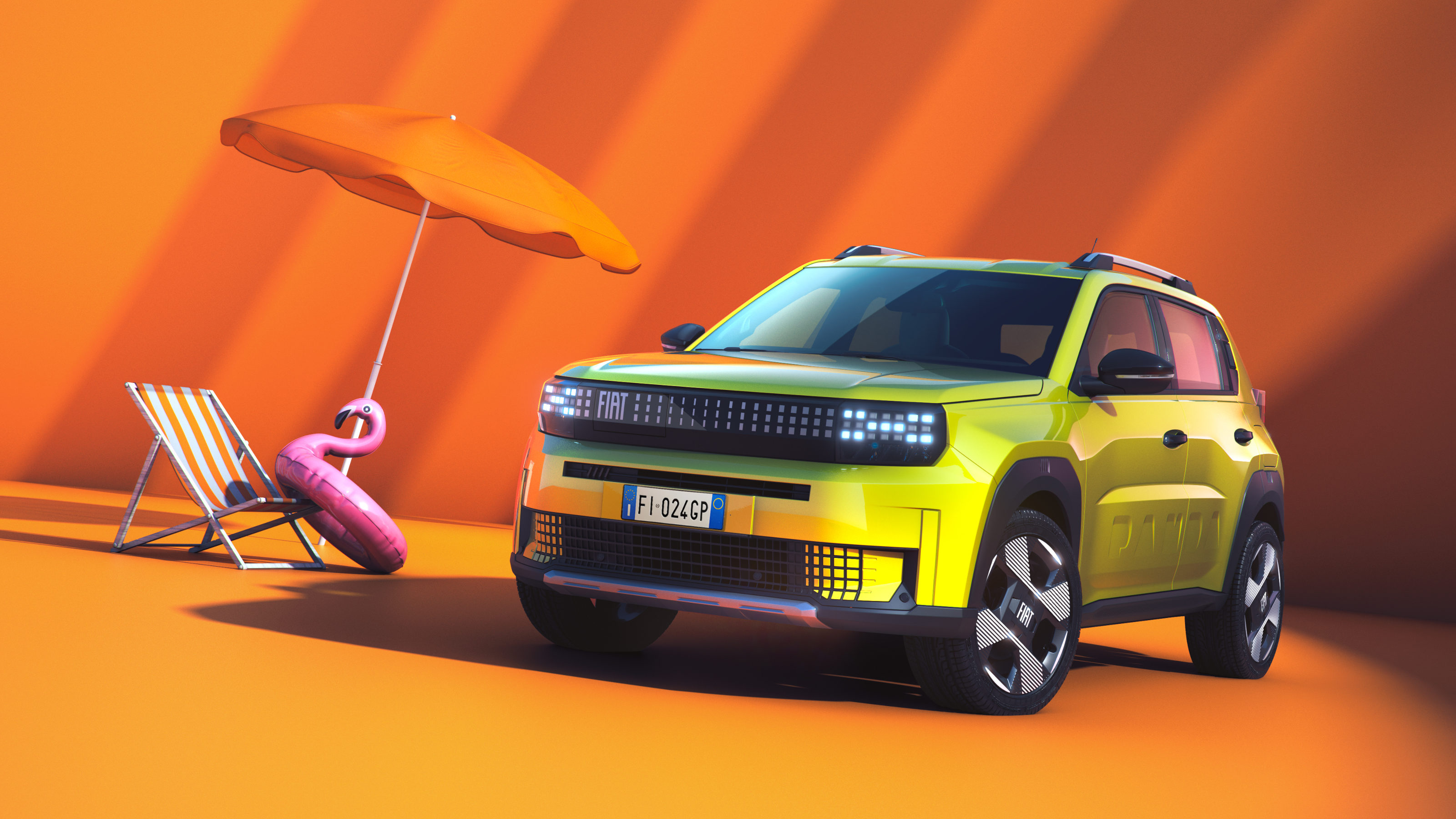 Fiat Grande Panda first look: will retro-seeking lightning strike twice?
Fiat Grande Panda first look: will retro-seeking lightning strike twice?This is the new Fiat Grande Panda, a compact hybrid and electric car that brings delightful design back to a well-loved model
By Jonathan Bell